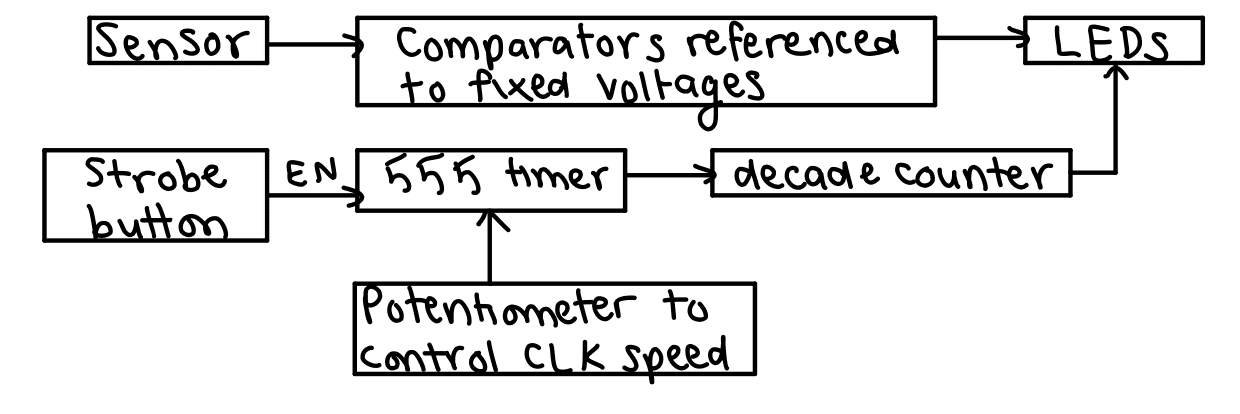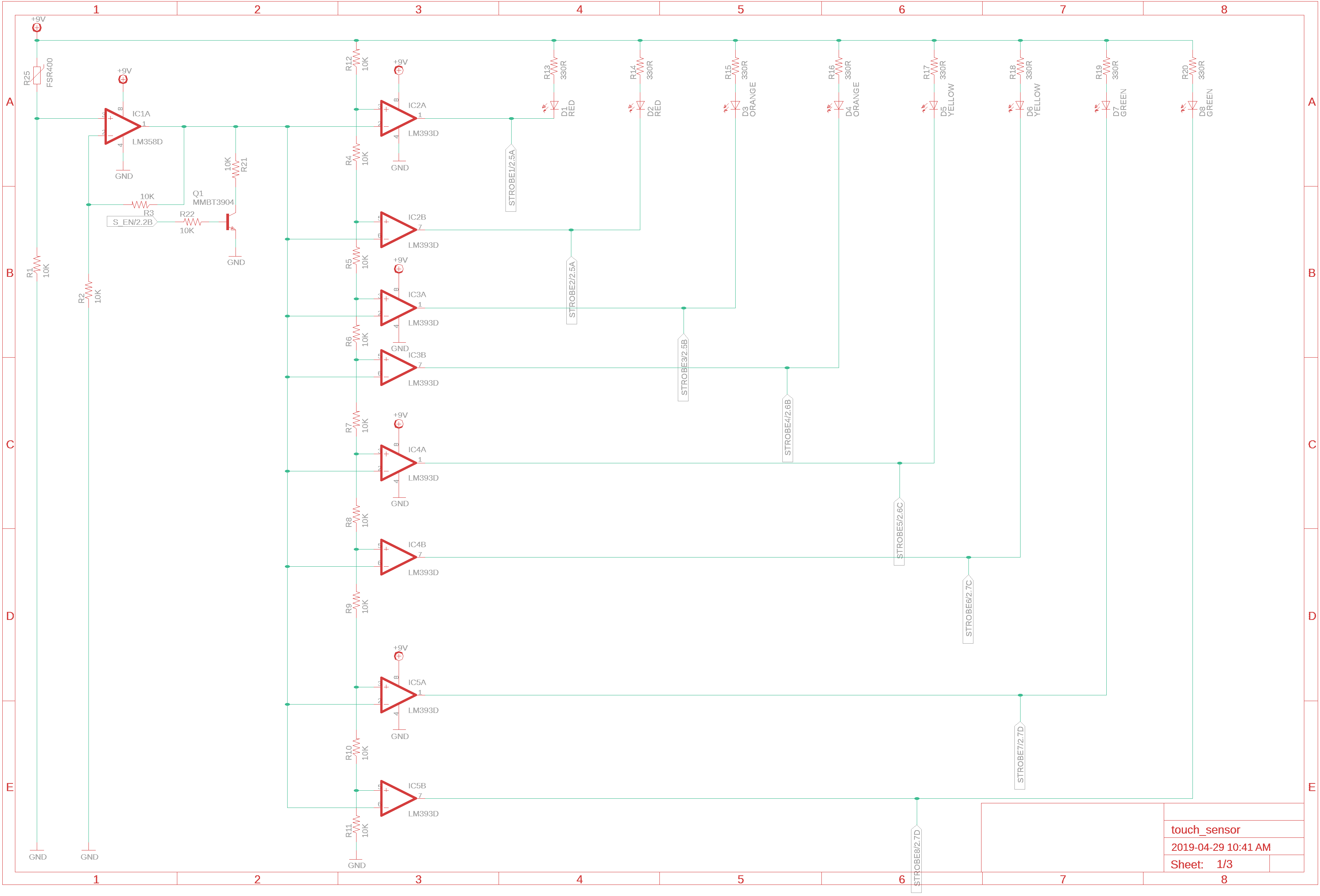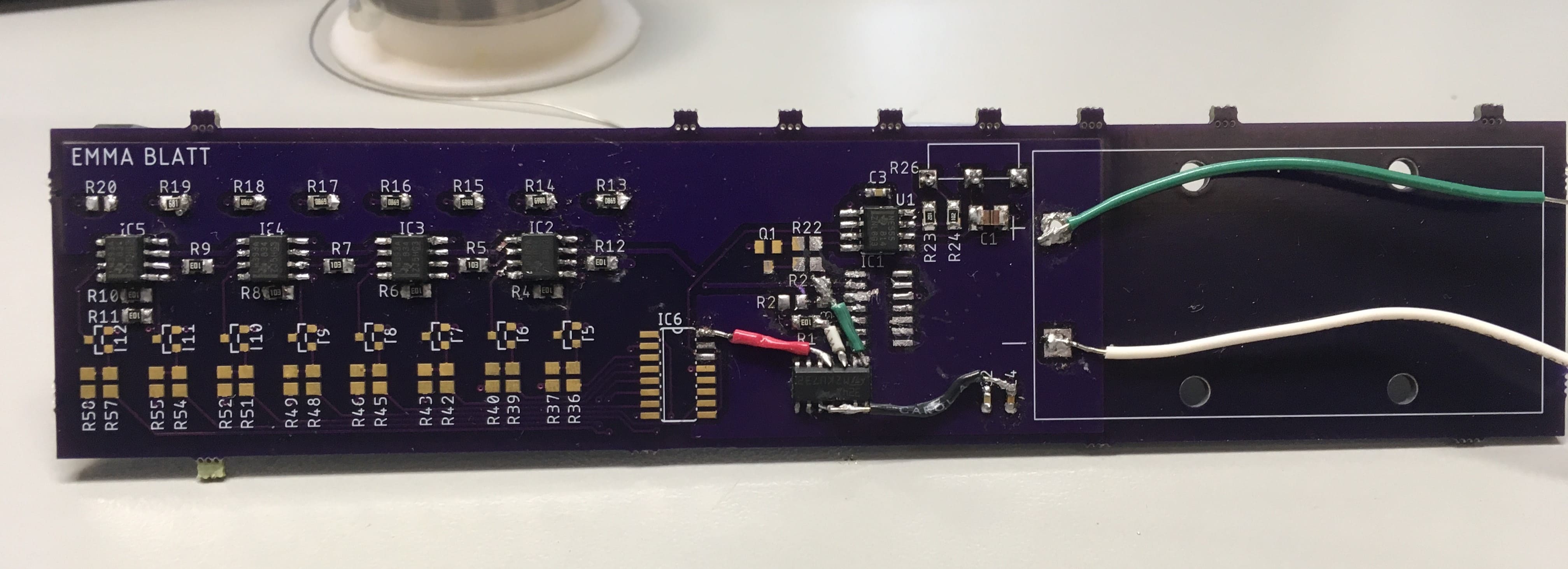—The Sensor
There are various types of pressure sensors that could have worked in this application. I chose to use a force-sensitive resistor (FSR) because it is easy to implement and relatively inexpensive.
See the full FSR integration guide →The sensor is a force-senstive resistor. When more force is applied, the filament has a lower resistance.
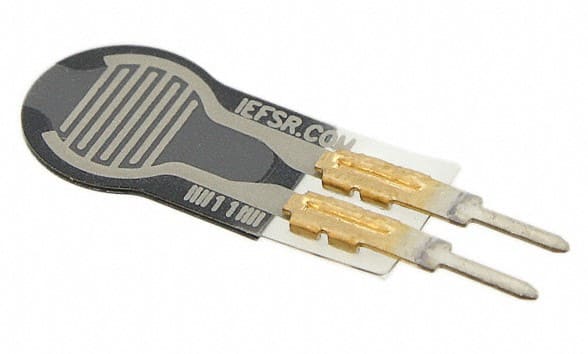
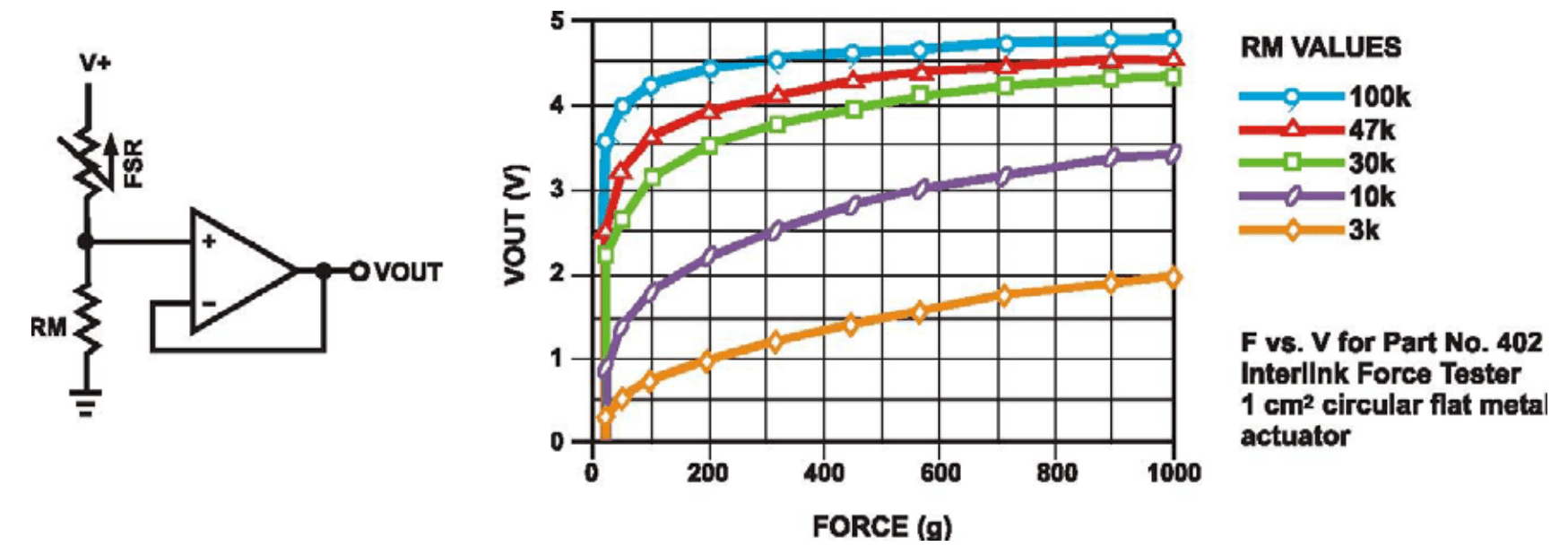
As indicated in the datasheet, the resistance ranges from 100K to around 1K. Through testing as a voltage divider with a 10k resistor and a 9V battery, I found that the output voltage ranges from 0 to 7.5V.
